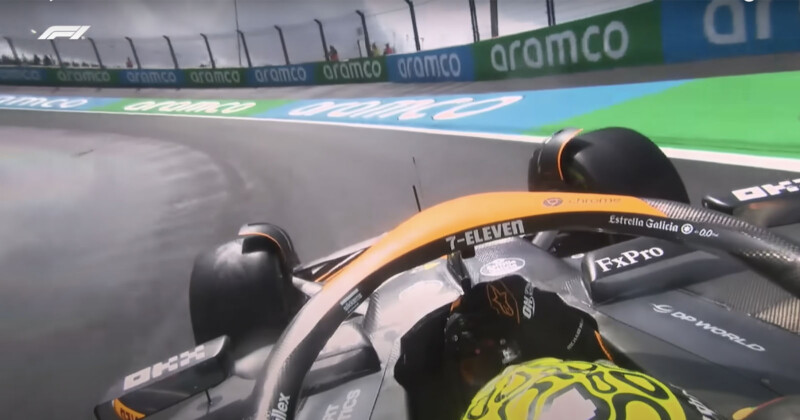Formula 1’s Gyro Camera Offers Exciting New Angles During Grand Prix

A gyro camera attached to the Formula 1 car of British driver Lando Norris has caught the attention of racing fans at this weekend’s Dutch Grand Prix.
The specialized onboard camera adjusts its orientation to keep the horizon level, compensating for the car’s pitch, roll, and yaw as it moves through corners.
The results are particularly dramatic at the Zandvoort circuit in the Netherlands where the track is undulating and has banking sections similar to the Indianapolis Motor Speedway.
The camera angle has won widespread with one fan calling it the “coolest thing because it feels like im watching a POV on a rollercoaster.”
Gyro Cam 🤝 Zandvoort #F1 #DutchGP @McLarenF1 pic.twitter.com/zoQXU7q5qO
— Formula 1 (@F1) August 23, 2024
In a video posted to the Formula 1 YouTube channel a couple of weeks ago, on-board camera manager Dino Leone explains that the gyroscopic cameras are still in development.
“It was originally thought of for Zandvoort with the banking,” says Scarborough.
“It has a sensor that allows us to play with the stabilization settings on the fly so we can increase the rate at which the gyroscopic effect happens. We can decrease that rate and we can increase the rate of movement within the camera.”
This means that, unlike some gyroscopic cameras, the ones in F1 aren’t on gimbals and don’t move around — instead staying static.
“It’s all done electronically, so the sensor is much bigger than the lens and it moves around the sensor, as opposed to moving physically. It’s very tricky,” explained F1’s head of onboard Steve Smith in a Motorsport article last year.
Smith revealed that the cameras were present at last year’s Dutch Grand Prix but the pictures weren’t broadcast because due to “the weather conditions and other mitigating circumstances.”
The Sony-made cameras have been used in the elite motorcycle racing series MotoGP where the gyro cameras compensate for riders leaning into corners (seen below). But Scarborough adds that Formula 1 cars provide a particularly hostile environment for the cameras meaning an extra challenge for the manufacturers.
Shoulder cam is so good around COTA 😍#MotoGP pic.twitter.com/ApzzSdx2eg
— Crash MotoGP (@crash_motogp) April 14, 2023
“What works elsewhere doesn’t work on a Formula 1 car so we’re working to make things more robust, more reliable, the same way the teams’ technology goes into road cars, our technology is going into camera development,” says Scarborough.
Image credits: Formula 1